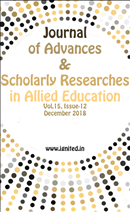A Study of the Determinants of Child Labour in State of Uttarakhand, India – A Case Study
Exploring the complexities of child labour and its determinants in Uttarakhand, India
Keywords:
child labour, determinants, Uttarakhand, India, exploitative, hazardous, minimum age, socio-economic, human resource development, eradicationAbstract
Child labour is done by any working child who is under the age specified by the law of the nation. Child labour is a hazard to the way of children’s mental, physical, social, educational, emotional and spiritual development. Thus, it is obvious that any child who is employed in any occupation in any trade, business or industry or involved in any activity with purpose to feed self or family is known as child labour. Countries like India are allowed to fix the minimum age at 14 years in accordance with their socio-economic circumstances. According to the Statistical Organization of International Labour Organization (ILO), child labour is work performed by children under 18 of age which is exploitative, hazardous and inappropriate for their age and which is detrimental to their schooling or social, mental, spiritual and moral development.It is not only confined to work on family farm or in traditional family robs and occupation but it has spread to other fields and you may find child labour working in mess and canteens of so many universities and higher education institutions in India in general and in Uttarakhand in particular. The child labour is also prevailing in agriculture and allied activities, unorganized small sector and even in organized industries.The problem of child labour is a complex problem and it is a consequence of the system under which the Indian economy is functioning. At present the problem of child labour has become the most challenging and alarming not only in state of Uttarakhand but in allover India and directly related to human resource development of the country. The practice of child labour is legally, morally, ethically and even psychologically very wrong, however efforts have been made by the Governments, NGOs and other social organizations for the eradication of this burning and serious problem but still it is continues in the present 21st century not only in India but even in industrialized and advanced countries and the problem has not been fully eradicated and resolved.The researcher strongly feel that imposing a complete ban on child labour, without providing any alternative to them and their family would not be effective, but likely to be counterproductive. In fact, it is a socio-economic-demographic problem and can’t be tackled by merely passing the legislations.Downloads
Download data is not yet available.
Published
2018-12-01
Issue
Section
Articles
How to Cite
[1]
“A Study of the Determinants of Child Labour in State of Uttarakhand, India – A Case Study: Exploring the complexities of child labour and its determinants in Uttarakhand, India”, JASRAE, vol. 15, no. 12, pp. 998–1003, Dec. 2018, Accessed: Jan. 11, 2026. [Online]. Available: https://ignited.in/index.php/jasrae/article/view/9388











